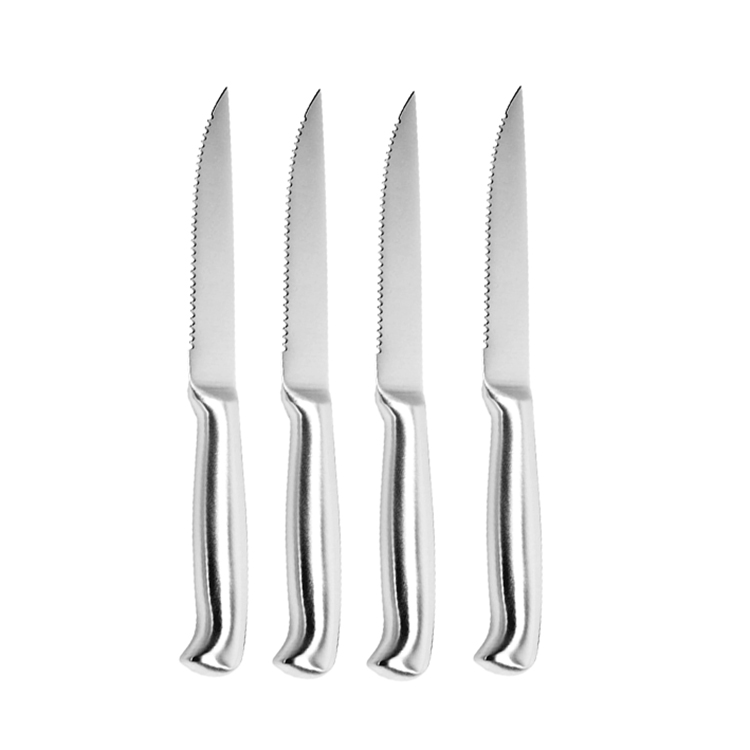Views: 290 Author: Site Editor Publish Time: 2025-11-19 Origin: Site











Content Menu
>>> Advantages of Fixed Blade Knives
>>> Advantages of Folding Knives
● Sharpening Techniques for Fixed Blade Knives
>> Steps to Sharpen a Fixed Blade Knife
● Sharpening Techniques for Folding Knives
>> Steps to Sharpen a Folding Knife
● Common Questions About Knife Sharpening
>> 1. Can I sharpen both types of knives?
>> 2. How often should I sharpen my knives?
>> 3. What is the best angle for sharpening knives?
>> 4. Can I use the same sharpener for both types of knives?
>> 5. What should I do if my knife is damaged?
Fixed blade knives are characterized by a blade that does not fold into the handle. This design offers several advantages, including increased strength and durability. They are often used in outdoor activities, survival situations, and heavy-duty tasks.
- Strength: Fixed blade knives are typically stronger than folding knives due to their solid construction.
- Ease of Maintenance: With no moving parts, they are easier to clean and sharpen.
- Versatility: They can handle a variety of tasks, from cutting to chopping.
Folding knives, on the other hand, have blades that fold into the handle, making them more compact and portable. They are popular for everyday carry and light outdoor use.
- Portability: Their compact size makes them easy to carry in pockets or bags.
- Safety: The folding mechanism protects the blade when not in use.
- Variety: Folding knives come in many styles and sizes, offering options for different tasks.
1. Whetstone: A whetstone is a traditional sharpening tool that allows for precise control over the sharpening angle. It is ideal for fixed blade knives.
2. Honing Steel: This tool is used to realign the edge of the blade, maintaining sharpness between sharpenings.
3. Electric Sharpener: For those who prefer convenience, electric sharpeners can quickly sharpen blades but may not provide the same level of precision as manual methods.
1. Clean the Blade: Ensure the knife is clean and free of debris.
2. Choose the Right Angle: Most fixed blade knives are sharpened at an angle between 15 to 20 degrees.
3. Use the Whetstone: Wet the whetstone and place it on a stable surface. Hold the knife at the chosen angle and slide the blade across the stone, applying even pressure.
4. Alternate Sides: Sharpen both sides of the blade, ensuring an even edge.
5. Hone the Blade: After sharpening, use a honing steel to realign the edge.
1. Sharpening Rods: These are useful for maintaining the edge of folding knives, especially those with serrated blades.
2. Pocket Sharpeners: Compact and portable, these sharpeners are designed for on-the-go maintenance.
3. Whetstone: Similar to fixed blade knives, a whetstone can also be used for folding knives, particularly for straight-edged blades.
1. Clean the Blade: Just like with fixed blades, start by cleaning the knife.
2. Identify the Blade Type: Determine if the blade is straight or serrated, as this will affect your sharpening technique.
3. Sharpening Straight Blades: Use a whetstone or sharpening rod at the appropriate angle, typically around 20 degrees. Slide the blade across the stone, alternating sides.
4. Sharpening Serrated Blades: For serrated knives, use a tapered sharpening rod. Insert the rod into each serration and pull it through gently to sharpen.
5. Hone the Blade: Use a honing steel to maintain the edge between sharpenings.
Yes, both fixed blade and folding knives can be sharpened using appropriate techniques and tools. The method may vary depending on the blade type, but both require regular maintenance to ensure optimal performance.
The frequency of sharpening depends on usage. If you use your knives frequently, you may need to sharpen them every few weeks. For occasional use, sharpening a few times a year may suffice.
Most knives are sharpened at an angle between 15 to 20 degrees. However, this can vary based on the knife type and intended use. For example, kitchen knives may require a sharper angle than outdoor knives.
Yes, many sharpeners are versatile enough to handle both fixed blade and folding knives. However, ensure that the sharpener is suitable for the specific blade type, especially for serrated knives.
If your knife has chips or significant damage, it may require professional sharpening or repair. Attempting to sharpen a severely damaged blade can worsen the issue.

Sharpening both fixed blade and folding knives is essential for maintaining their performance and longevity. By understanding the appropriate techniques and tools for each type, you can ensure that your knives remain sharp and effective for all your cutting needs. Regular maintenance not only enhances the functionality of your knives but also ensures safety during use.